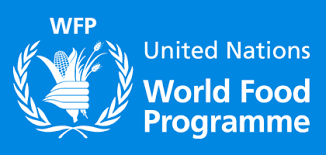On World food day, WFP urges international community to remember vulnerable Somalis struggling against hunger

Mogadishu/Nairobi – Press Release – Amid several hunger emergencies – both natural and man-made – the United Nations World Food Programme (WFP) is marking World Food Day, 16 October, by highlighting both the challenges around the world and the real progress being made toward “zero hunger.”
“Every year, we witness hunger’s devastating effect on families, communities and whole economies,” said WFP Executive Director Ertharin Cousin. “But despite horrific crises engulfing entire regions, we are making real progress in the fight to sustainably and durably end hunger and chronic malnutrition. Thanks to the work we do with our partners on emergency preparedness, support to family farmers, nutritional assistance – particularly in a child’s first 1,000 days – and building the resilience of communities to withstand shocks, millions of people are now better able to focus on building a future free of hunger for themselves and the next generation.”
According to The State of Food Insecurity in the World 2014 report, the total number of hungry people in the world is down by 37 million, to 805 million, and 63 countries have reached international hunger-reduction targets before 2015, proof of the progress possible when governments, humanitarian organizations and the private sector come together to make lasting change.
However, in places like Somalia, the small gains made since the end of the 2011-2012 famine that killed a quarter of a million people are being reversed due to combination of factors, including a delayed and below average rainy season, the ongoing conflict in parts of the country and reduced humanitarian assistance as a result of limited resources and access.
“As the international community responds to other crises, they must not forget Somalia— where more than 1 million people are struggling to meet their minimum food requirements and over 200,000 children are acutely malnourished, 40,000 of whom are severely malnourished and face a higher risk of death,” said Laurent Bukera, WFP Representative to Somalia. “Without urgent and sustained humanitarian assistance, these already dangerously high figures are likely to rise.”
WFP is responding to the increasingly severe needs in the fragile Horn of Africa country where 3 million people need some form of humanitarian assistance. In May, WFP scaled up lifesaving nutrition and emergency food assistance to include an emergency caseload of more than 250,000 people, bringing the number of people WFP reaches on average each month to over a million, but resources are urgently needed to maintain this level of response, Bukera said.
Strengthening livelihoods and increasing resilience is also an integral part of WFP’s work in Somalia. In southern Somalia, WFP and partners are working with small-scale farmers to increase production capacity, improve the quality of grains produced and – when possible – buy food directly from them to help support growth of markets.
Recent studies have outlined the devastating effect that hunger and under-nutrition can have on the lives of individuals, communities and national economies. Data from a series of studies called the Cost of Hunger in Africa has shown that hunger is capable of reducing a nation’s workforce by 9.4% and national GDPs by up to 16.5%, severely limiting a developing country’s ability to make much needed investments and grow.
This shows why the international community must continue to strive toward a world with zero hunger, a world in which children and families can build their futures and farmers can better provide for themselves and help their communities become self-sufficient, Cousin said.
Every year, WFP marks World Food Day alongside the United Nations Food and Agriculture Organization (FAO) and the International Fund for Agricultural Development (IFAD) in Rome and offices around the world.
The theme for this year’s World Food Day is “family farming,” one of the many ways WFP is supporting local economies to build self-sufficiency and people to achieve zero hunger in their communities. Here are just a few of the ways WFP is helping an average of 90 million people a year focus on their futures:
• Providing emergency food assistance to people affected by natural and manmade disasters, such as the outbreak of Ebola in West Africa and the civil conflicts in Syria, Iraq, Central African Republic and South Sudan
• Running or supporting school meals programmes in remote places, giving roughly 20 million of the poorest children a chance at a brighter future
• Prioritizing the purchase of food in developing countries and from family and small-scale farmers to support local economies
• Partnering with companies and organizations around the world to improve WFP operations, create innovative solutions and raise funds and awareness